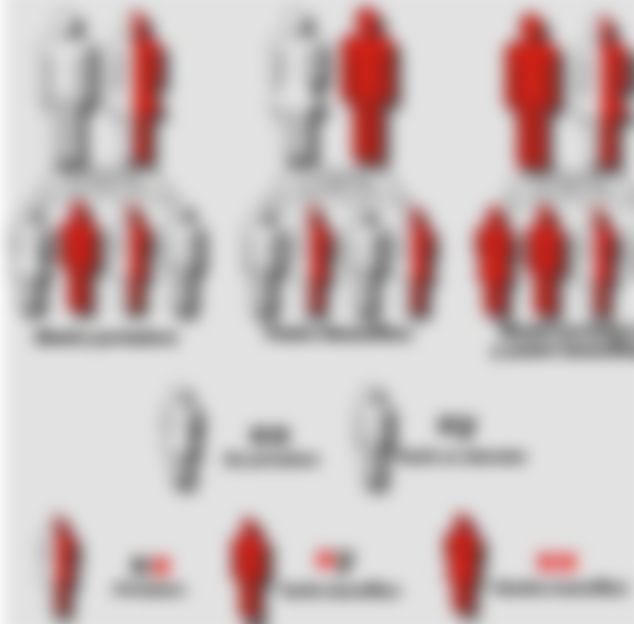WHAT IS HEMOPHILIA?
The word Hemophilia comes from two Greek words; haima, meaning blood, and philia, meaning disease. Hemophilia is an inherited disease. This means that it is transmitted from mother to child at birth. The blood of a person with hemophilia does not clot normally. A person with hemophilia does not bleed harder or faster, but for a longer period of time. Many people believe that hemophiliacs bleed a lot from small cuts. This is not true. External wounds are usually not of greater danger. Internal bleeding (hemorrhage) is much more serious. These bleeds are in the joints, especially in the knees, ankles, and elbows; in tissues and in muscles. If bleeding occurs in a vital organ, especially the brain, the life of a person with hemophilia is endangered.

WHAT ARE OTHER NAMES FOR HEMOPHILIA A?
Hemophilia A is also called by two other names: Classical hemophilia because it is the most common disorder of blood factor levels. Factor VIII is hemophilia, because it is a disorder of factor VIII levels in the blood, a protein in the blood whose deficiency causes a clotting problem.
WHAT ARE OTHER NAMES FOR HEMOPHILIA B?
Hemophilia B, is also known by two other names; Christmas disease, according to Stephen Christmas, a Canadian, who in 1952 was the first person to be identified with this new form of hemophilia. Factor IX is hemophilia, because it is a disorder of the levels of factor IX in the blood, a protein in the blood whose lack causes a slowing down of the clotting process. How common is Hemophilia? Both Hemophilia A and Hemophilia B are rare disorders. Hemophilia A affects one in 10,000 people on average, while Hemophilia B is even rarer because it affects only one in 50,000 people.
WHO IS AFFECTED BY HEMOPHILIA?
People of all races, skin colors and ethnic groups suffer from hemophilia. Severe Hemophilia affects almost exclusively men. Women can have severe hemophilia only if the father has hemophilia and the mother is a carrier. which is an extremely rare case. However, many women who carry Hemophilia have symptoms of mild hemophilia. Only now are we able to see all the difficulties caused by the coagulation disorder in the carrier itself as well as the way in which this disorder affects the quality of life. As hemophilia is an inherited disorder, people get it at birth. This means that children can have hemophilia. In fact, hemophilia is most often diagnosed in a child during the first year of life.

Severe hemophiliacs with less than 1% factor in the blood have internal bleeding several times a month. Often there is no obvious reason for the bleeding - it just happens. Moderate hemophiliacs bleed much less frequently. Bleeding is a consequence of minor traumas such as sports injuries and others. Mild hemophiliacs have bleeding even less often, they may become aware of their disorder only in the case of surgery, tooth extraction and severe injuries. Women with mild hemophilia (carriers) bleed more during the menstrual period.
Treatment of hemophilia with medicinal herbs
Although hemophilia is not curable, herbal preparations help to reduce complications to a minimum, which will certainly improve the quality of life of hemophiliacs.
Rusomaca and virak to alleviate the ailments
Mix equal parts of veronica, virak, rusomaca and hajduk grass, then steam a teaspoon of the mixture with a quarter of a liter of water and leave it to stand for a minute or two.
Drink four cups of tea a day.
Take a bath every 14 days: soak 100 g of this mixture in a liter of cold water overnight, and the next day, cool it and add it to moderately warm bath water.
Lie in the customer for about 20 minutes.
Tea from called to relieve discomfort
A mixture of called and boxwood helps, and tea is prepared by boiling four tablespoons in a liter of water for a minute or two.
Tea from called strain and leave to cool.
Drink in sips per cup of tea three times a day before and after the main meal, for 12 days.
Therapy for painful joints
Cabbage dressings
Iron over three leaves of fresh cabbage to warm and soften, then place on a sore and inflamed wrist and wrap with cotton or linen cloth.
After an hour, repeat the treatment with new leaves.
Comfrey ointment
During the day, smear the affected joints with comfrey tincture in five layers, and in the evening rub the ointment mixed with that plant. Cover with a nylon bag and wrap with a cotton cloth.
So leave it overnight and wash the skin in the morning.
Basil reduces inflammation
The ingredient eugenol from this medicinal plant has a strong anti-inflammatory effect, and helps in case of pain and swelling of the joints. It can be used as an addition to dishes in fresh or dried form or in the form of tea.


Great article! Unfortunately, a lot of the information on this site isn't very helpful, but this was actual potentially-life saving information.